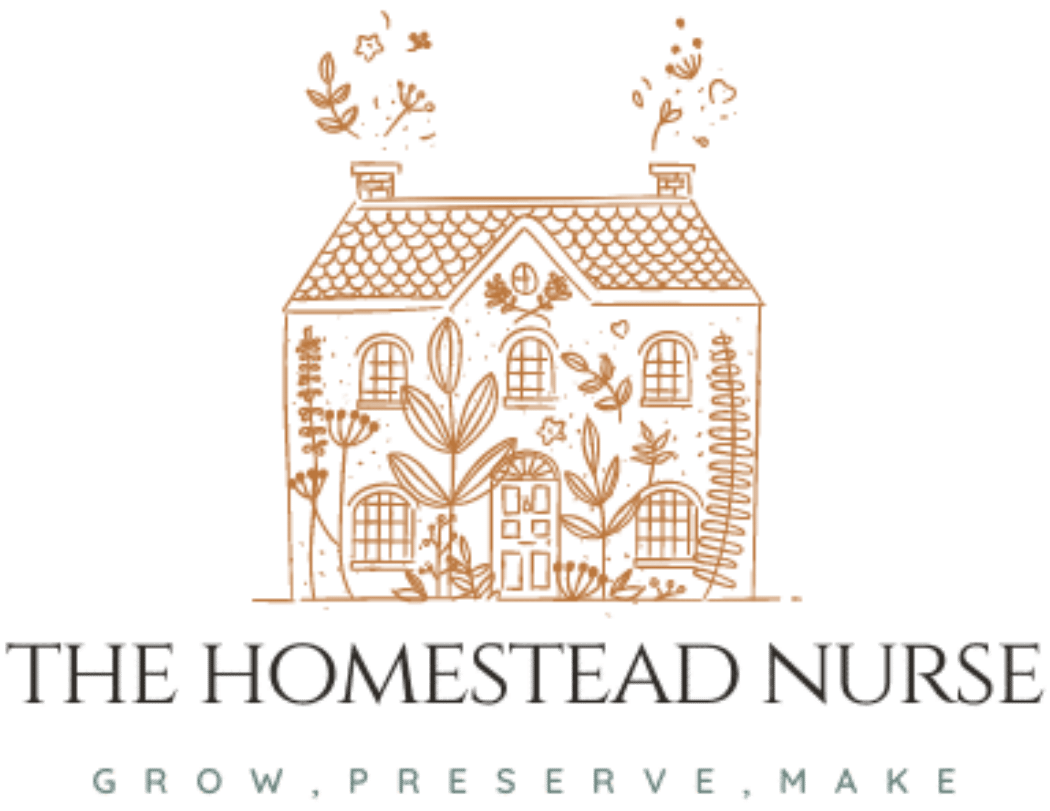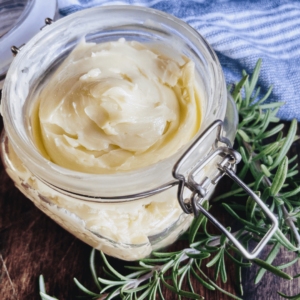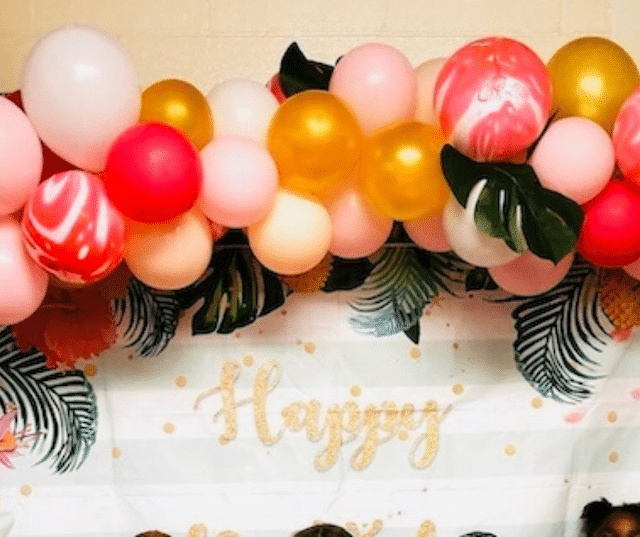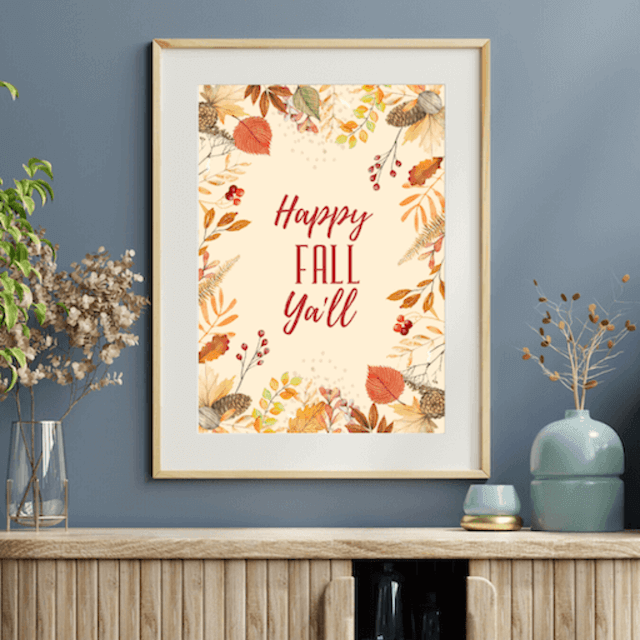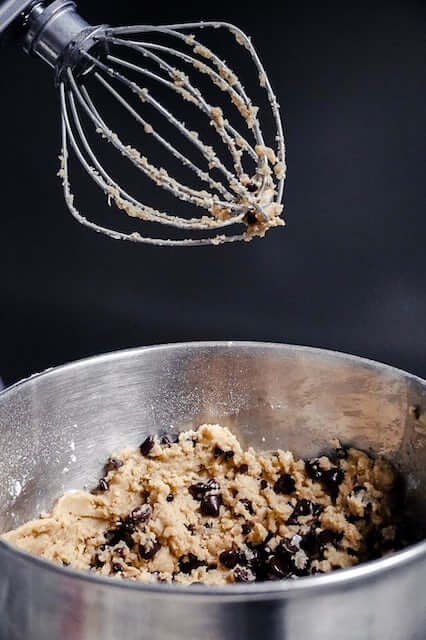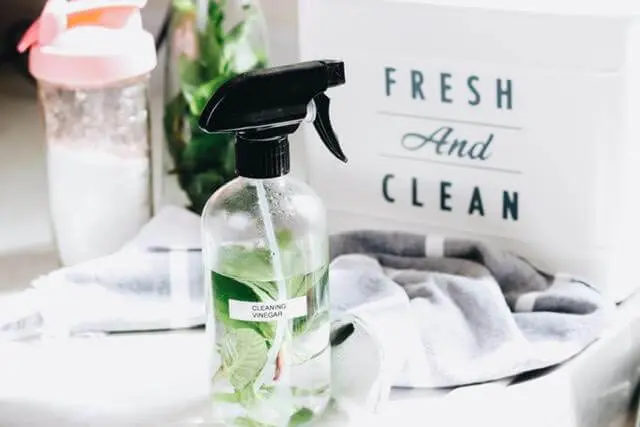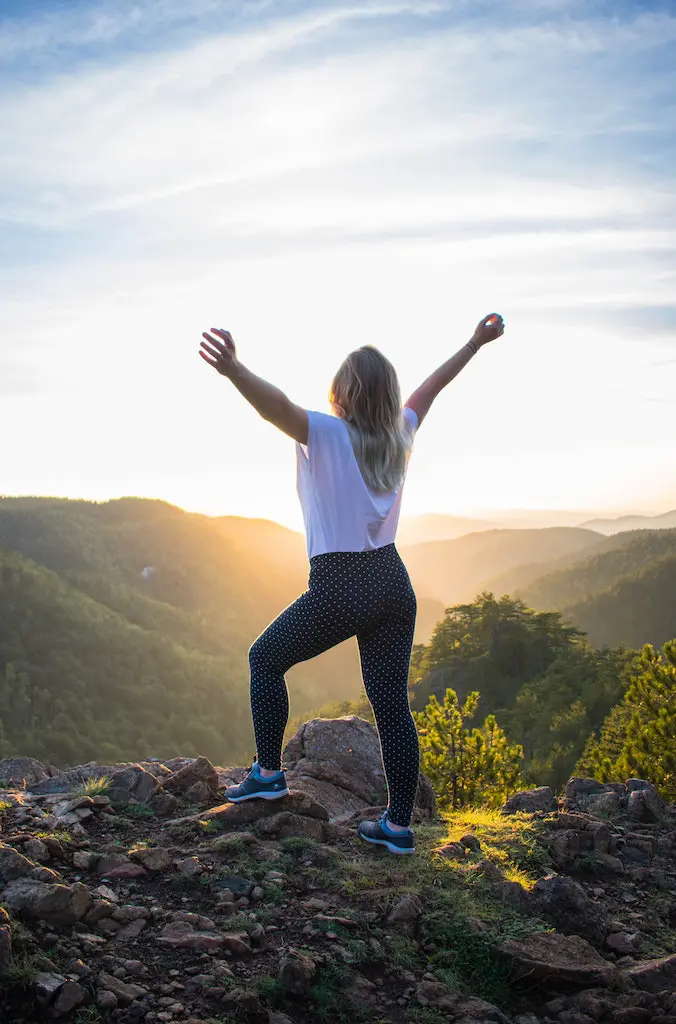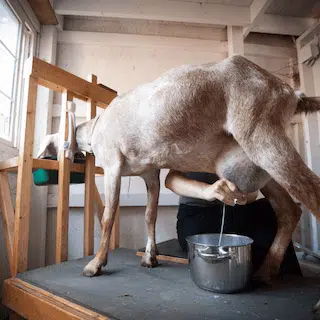Easy DIY lotion without beeswax (Lemon Balm & Lavender recipe)
No beeswax, no problem! We will show you a homemade DIY lotion without beeswax recipe that is easy and very moisturizing.
This DIY lotion recipe post may contain affiliate links, as an Amazon Associate I earn from qualifying purchases. Please read my Disclaimer for more information.
Making your lotion might be safer for your skin since a lot of body butter products these days have unnecessary and harmful ingredients in them.
Our homemade lotion recipe does not contain animal products, has all natural ingredients, is a natural moisturizer, has non-toxic ingredients, is an easy recipe to follow, and is a great skincare product for sensitive skin.
Organic, clean-ingredient body products are also very expensive and can be costly for someone who has to buy them every couple of weeks.
Making your own body products is fun and will make your skin feel amazing after using them.
This recipe has quality ingredients, does not contain distilled water so it doesn’t need a broad-spectrum preservative, and will leave your skin so soft and smooth.
What are the benefits of homemade body lotion?
- Provides moisture to the skin naturally
- Doesn’t contain harmful contaminants or toxic ingredients
- Can save you money yearly
- Spikes creativity that is good for your mental health
- You can avoid hormone disruptors on the skin
- Gives you natural moisturizing properties
- Universal, as it can be used in all skin types
- Environmental friendly
What is body lotion?
Body lotion is a form of liquid or cream that is applied to the skin for medicinal or cosmetic purposes. Body lotion can come in a lot of different forms like solves, bars, bombs, etc.
It protects the skin from harmful environmental contaminants, and skin issues like eczema, and in some cases protect you from UV rays.
Applying lotion should be an important part of your daily routine as it can be used to soothe, moisturize, and soften skin.
DIY lotion without beeswax Supplies
The materials you used to make DIY lotion are as important as the ingredients. By using a glass bowl you are preventing any various chemicals or materials from leaching into your lotion.
A glass bowl is one of the safest bowls you can use when making body products.
Double boiler, or pot
If you have a double boiler, that’s great, but if you don’t, it’s okay because you can make your double boiler. Using a regular pot filled with water, place your glass bowl on top of your pot to mimic a double boiler effect.
Cheesecloth or bread bag
Using a cheesecloth or a bread bag made with the same material as a cheesecloth is needed to help strain your herb oil properly. You cannot use a regular strainer as you will get some herb particles in your lotion when straining.
Spatula
Using a spatula is a great tool to carefully help mix and whip up your DIY lotion without beeswax.
To create a lotion texture, a hand mixer is needed to help break through all the kinds of butter and oils.
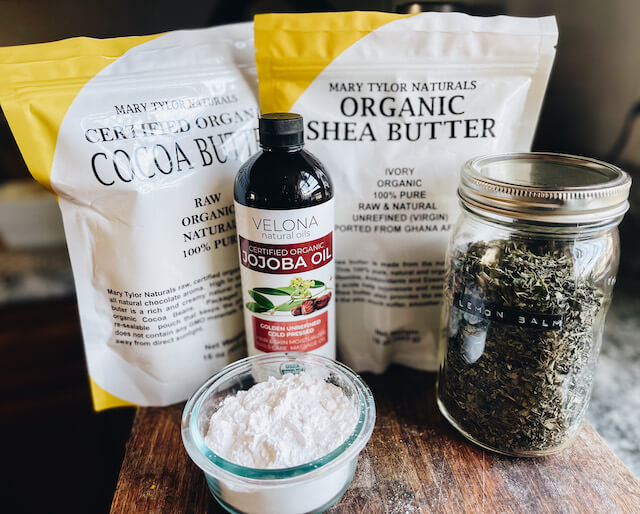
DIY lotion without beeswax Ingredient list
Shea butter
Shea butter is made from a kernel that is removed from a seed that comes from the shea tree. The kernel is ground up and roasted into a paste where fat is extracted and cooled to become solid.
This is a perfect ingredient to put in body products because of its multiple health benefits and properties:
- For acne-prone skin, for people who have dry skin, and for others who suffer from skin conditions like eczema.
- Shea butter is said to have an SPF of up to four, can rarely cause skin reactions, and is a very popular ingredient in body products that are out on the market today.
- Anti-inflammatory
- Has high levels of linoleic acid, oleic acid.
- Moisturizing
- Anti-aging and protects skin from free radicals.
Store shea butter in a cool place to prolong its shelf life.
Cocoa butter is from Theobroma cacao beans that are dried, toasted, and pressed to cocoa liquor where fat is released. There could be about 40 beans of cocoa seeds in each pod of the plant.
Cocoa butter does not have any dairy in it and is used for body care and to make chocolate. It is a plant-based butter that has a prolonged shelf life of up to six years and rarely goes rancid.
Some properties of cocoa butter include:
- Fighting free-radical damage
- Having antioxidants properties
- Anti-inflammatory
- Reduces stretch marks
- Hydrating the skin
- Can heal scarring.
This lotion recipe has cocoa butter to provide vitamin k, and hydration to soothe your skin. Cocoa butter is very gentle on the skin and provides plenty of moisture.
Lemon balm is a medicinal herb that is part of the mint family and when it flowers produces light yellow flowers.
This amazing herb also has:
- Antimicrobial properties
- Aedative effects
- Anxiety-reducing properties
- Promote cognitive function
- Treats cold sores
- Help with nausea
- Reduce stress, anxiety, and ingestion.
We add this oil to induce calmness, and relaxation and help you sleep.
This is a powerful liquid wax and not an oil, as it comes from the seeds of the flower called Simmondsia Chinensis. The flower takes about three years to grow and when it finally produces seed, oil is extracted from it to make Jojoba oil.
According to Healthline.com, “Jojoba oil has a variety of healing properties that may make it effective in treating skin conditions like acne, eczema, and psoriasis,”
- Jojoba oil will not go rancid as it is very rare compared to other oils
- It’s said this oil is the closest oil to human skin and can speed up the wound-healing process.
- hypoallergenic
- hydrating and moisturizing
- improves hair
- has antioxidant properties, and contains vitamin B complex, vitamin E, zinc, and copper.
We use this oil in our recipe to help heal your skin and provide moisture.
Arrowroot powder is flavorless, gluten-free, vegan, and paleo, and is from the plant Maranta arundinacea. You can store arrowroot for up to four years if stored in an airtight container
This ingredient is used to decrease the amount of greasy feeling of your DIY body lotion. Arrowroot powder is a great thickening powder for cooking and is a great alternative if you want to make a non-greasy homemade lotion.
Buy arrowroot powder at your local grocery store or online. We have a great option below!
Lavender essential oil
This essential oil is distilled from the plant Lavandula angustifolia. It is one of the most popular essential oils because it is used to help with multiple issues.
It’s known to have been used in Egyptian times as a perfume when they mummified the dead.
Lavender essential oil is a very powerful oil and some of its benefits include:
- An antioxidant
- anti-inflammatory
- antimicrobial
- antifungal
- antibacterial
- sedative
- antiseptic
- calming, and antidepressant properties.
We use lavender essential oil in this lotion recipe to reduce anxiety and stress.
DIY lotion without beeswax Instructions
Infuse herbs in a carrier oil. Equal parts oil (at least have 10 oz of oil) and herbs making sure oil is over herbs.
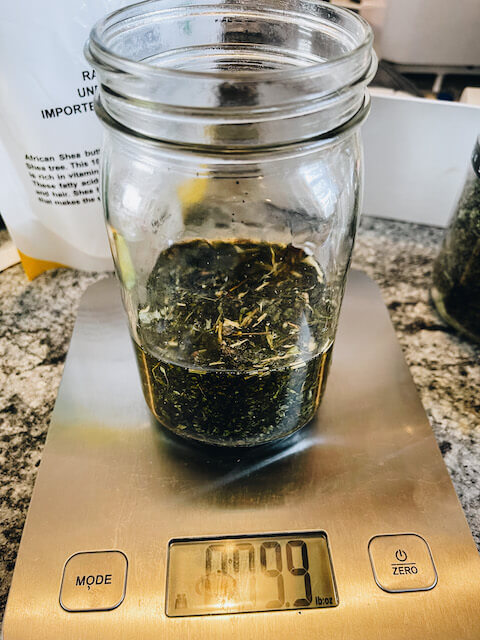
You can skip the first step if you already have herb-infused oil. If you don’t, you can Infuse herbs slowly by placing herbs in a glass jar with your carrier oil and leaving it for at least a month.
Infuse herbs the fastest way by adding equal portions of oil and herbs in a glass jar.
Add water to a pot and heat it to 120-140 degrees. Place the glass jar of herbs/oil in water and heat for at least 60 minutes.
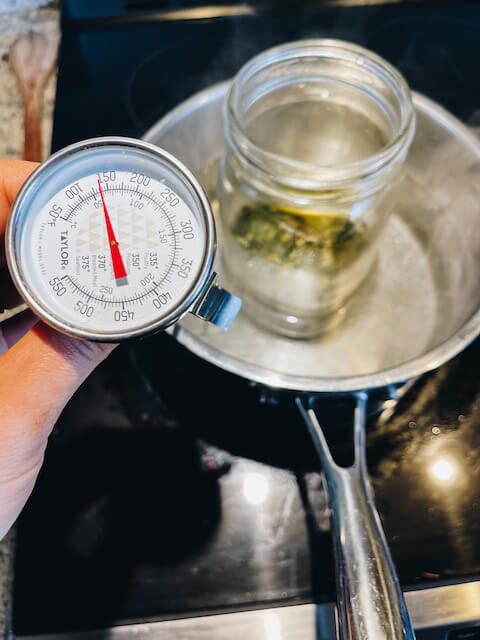
Measure out 4 oz of each butter in a glass bowl.
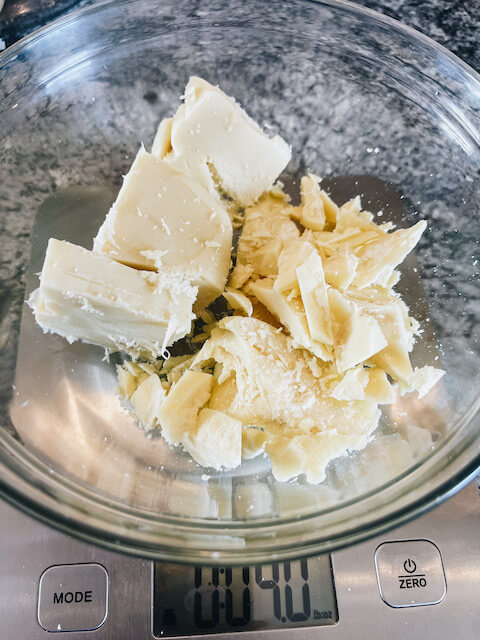
Strain your herb-infused oil in the same glass bowl and add 1/2 cup of herb oil.
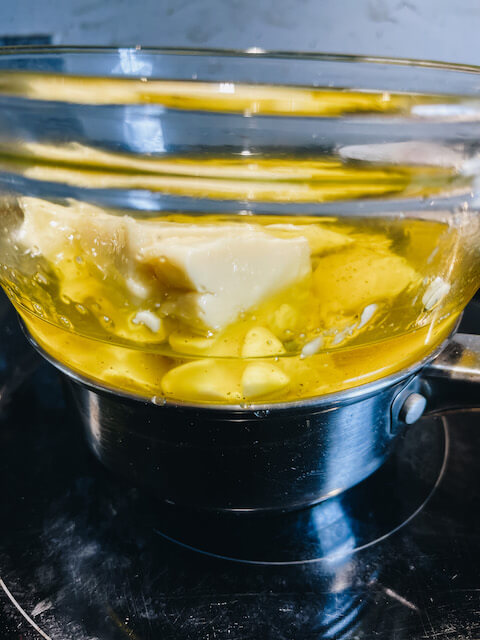
Melt the butter using a double boiler method. This time you can add the essential oil, about 40 drops of your now liquefied butter.
Place your glass bowl in the fridge or freezer until it’s solidified.
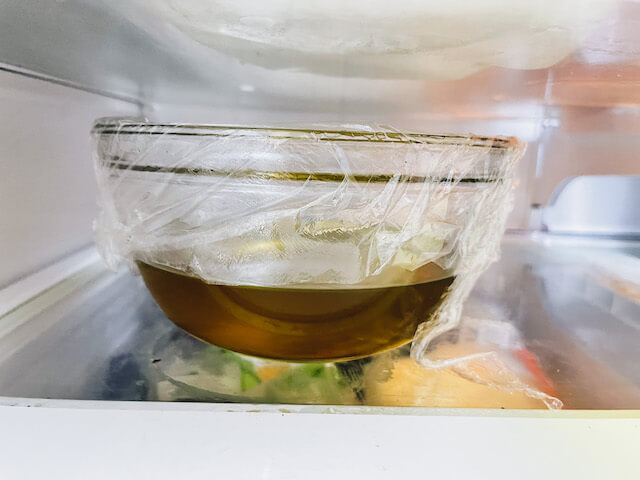
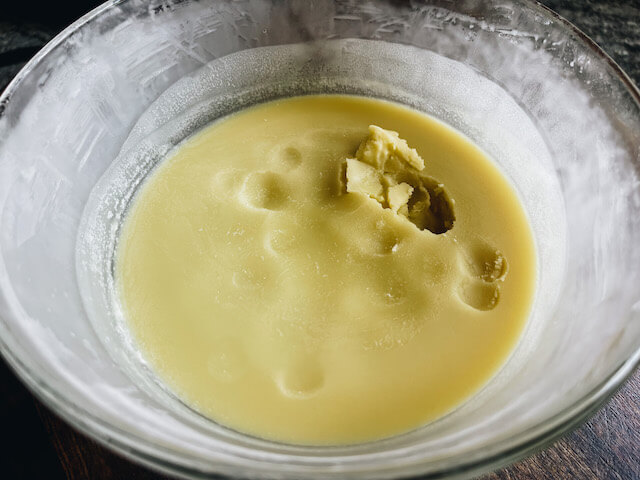
After your butter is solid, use a hand mixer to mix (if you forget to add you’re 40 drops of essential oil in the beginning, you can add them during this process).
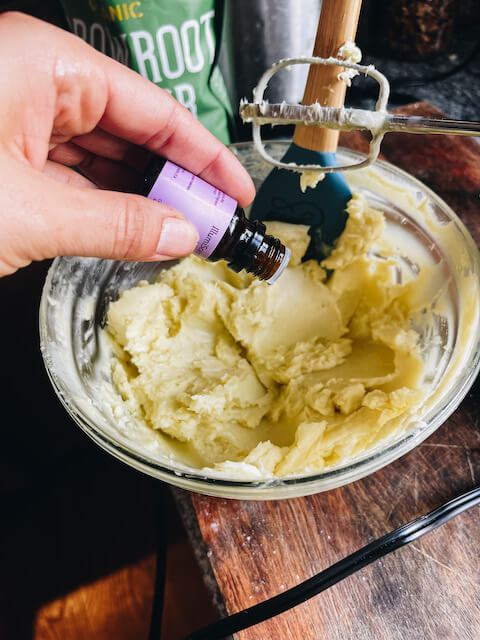
Add 3 tablespoons of arrowroot powder during this time.
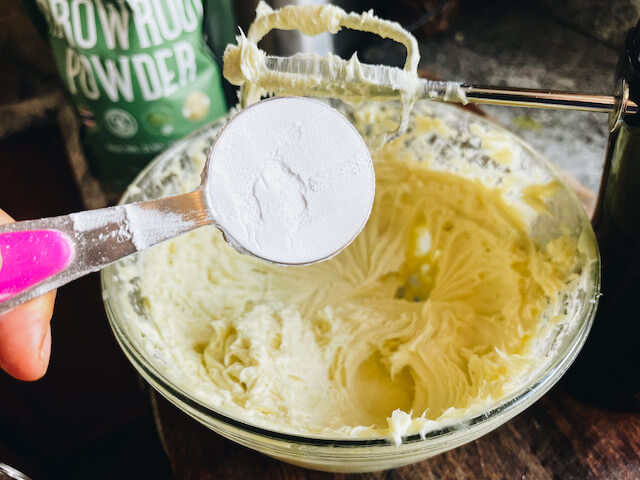
Mix until you get a lotion-like consistency.
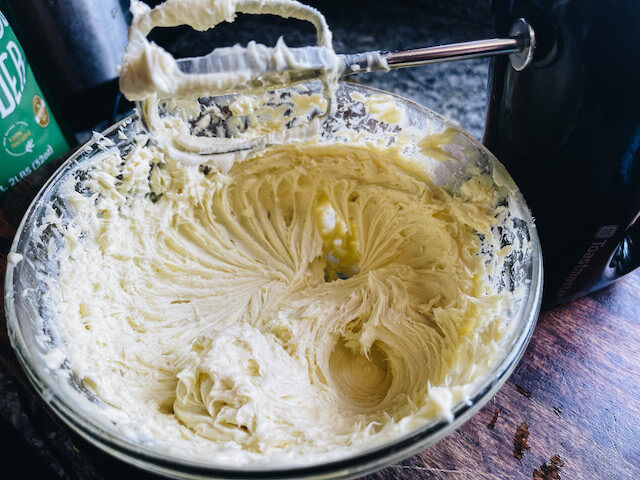
Place your DIY lotion in a glass container for storage and use. This recipe can make about 12-13 oz of lotion.
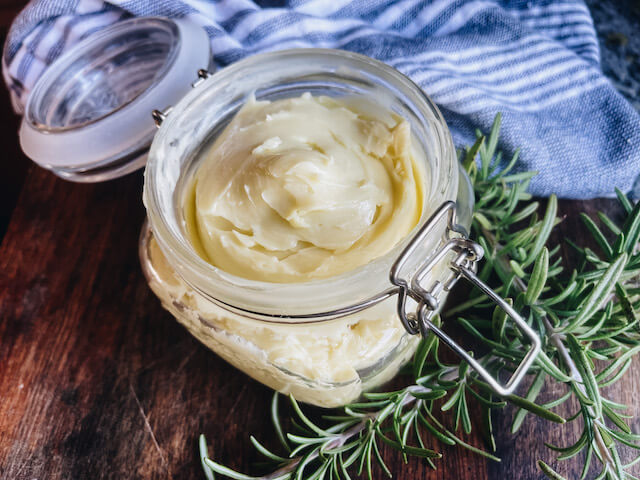
Storage Tip
When storing your final product or any homemade beauty products a good option for storage is in a glass airtight container.
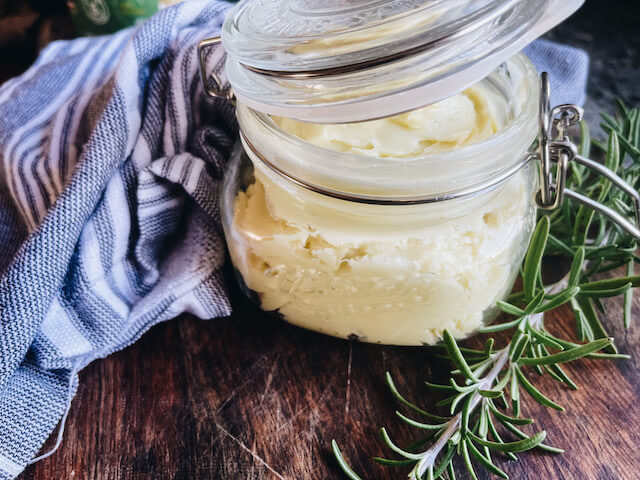
A mason jar is a great air-tight container because it come in all shapes and sizes. I use a mason jar mason myself to store my lotion.
Optional Ingredients (Substitutions)
You can use a lot of different substitutions when making body lotion by adding different types of butter and oils.
This lotion recipe is very interchangeable and depending on your preferences you can change the oils that you use to infuse your herbs or butter.
You can also use a different carrier oil to infuse your lemon balm in like the following:
Almond oil
Almond oil is made from almonds that are cold-pressed at room temperature. There are two types of almond oils, you can get bitter almond oil and sweet almond oil.
It is safe for your skin and has plenty of benefits as it is an antibacterial, full of vitamin A, biotin, vitamin E, and vitamin B-7.
Grapeseed oil
This is an all-natural oil that is created when grape seeds are extracted during winemaking.
There are many benefits to using grapeseed oil as a substitute oil in this recipe. Some positives are it has plenty of omega fatty acids, and vitamin E, has anti-inflammatory properties, is an anti-microbial, doesn’t clog pores, and provides hydration.
We don’t recommend using coconut oil just because it changes its texture depending on the temperature. Coconut oil is also a hit or miss for some as it can cause some breakouts or other reactions.
Now if you want to use coconut oil, by all means, use it, just be mindful of where you store your lotion, it can melt.
You can also change the butter that you use like:
Mango butter
A great substitute for cocoa and shea butter is mango butter because it has similar benefits and properties.
Mango butter is made when fat is cold-pressed out of a mango’s kernel.
Just like cocoa butter, mango butter doesn’t contain any dairy products. Mango butter is very moisturizing as it will melt right on your skin as soon as you apply it and it can help with dry skin.
It’s rich in vitamin E, has antioxidant properties, is a great source of fatty acids, won’t clog pores, protects you from UV rays, and has antibacterial properties.
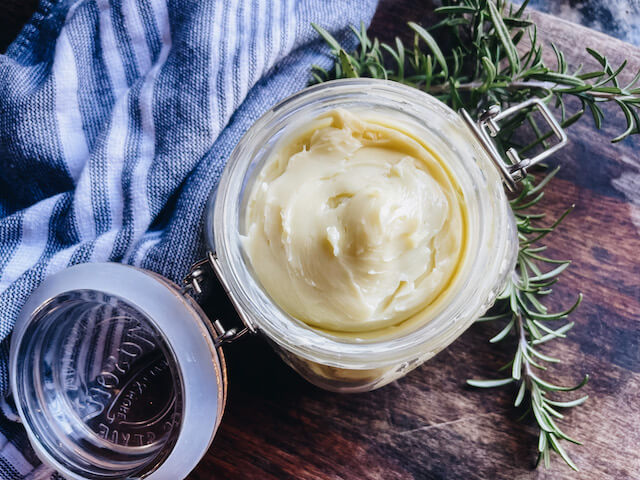
How to use homemade body lotion
A little bit of this homemade lotion will go a long way and will last you for a long time. To apply body lotion properly it’s good to make it a habit and make it part of your daily routine.
A good tip to consider is to be mindful of the body parts that you are moisturizing with your homemade lotion. Some parts of your body are rougher than others like the souls of your feet so might want to apply extra lotion on those areas.
Best practices suggest applying lotion after you have left a warm shower and have dried yourself.
A warm or hot shower with plenty of steam can dry out your skin, so applying something moisturizing as this DIY lotion will help lock moisture back into your skin.
Especially if you live in a cold area or just going through the winter season, applying lotion regularly will prevent dry skin.
Using homemade body lotion, like this one, will keep your skin soft and moisturized after a relaxing shower or bath.
DIY lotion without beeswax FAQ
What can I use instead of beeswax in a lotion bar?
You don’t have to use beeswax or an alternative when making a homemade lotion bar as long as you use a plant-based oil like Jojoba oil.
If you want to use a wax alternative then candelilla wax, berry wax, carnauba wax, jojoba wax (which is hydrogenated jojoba oil), sox wax, or olive wax can be all great alternatives.
How can I make my body lotion naturally?
You can make body lotion naturally by using ingredients that are plant-based and environmentally friendly. Some ingredients you can consider using when making body lotion are plant-based oils, plant-based butter, organic herbs, and essential oils.
Do you need emulsifying wax to make lotion?
You do not need an emulsifier to make lotion, but it does help if you have it on hand. Using an emulsifier does make homemade body products less greasy, and improves texture. Emulsifying wax is a petroleum-based wax that can only be substituted by another emulsifier.
How can I thicken my lotion naturally?
You can thicken the lotion by adding an emulsifier like emulsifying wax, cornstarch, arrowroot powder, and xanthan gum. All these thickening agents can give your lotion a dry finish and can reduce the feeling of being too greasy or oily.
Hope you enjoy this DIY lotion without beeswax, let us know what you think about it in the comments!
Easy DIY lotion without beeswax (Lemon Balm & Lavender recipe)
Equipment
- 1 glass bowl
- 1 Double boiler
- 1 Cheesecloth
- 1 handmixer
- 1 Glass jar
Ingredients
- 4 oz Shea butter
- 4 oz Cocoa Butter
- 1/2 cup Lemon balm infused oil
- 40 drops Lavender essential oil
- 3 Tbsp Arrowroot powder
Herb Infused oil
- equal parts Lemon balm and Jojoba Oil (at last 10oz of oil)
Instructions
- Infuse Lemon Balm herbs in Jojoba oil.
- Measure out 4 oz of each butter in a glass bowl.
- Strain your herb-infused oil in the same glass bowl and add 1/2 cup of herb oil.
- Melt the butter using a double boiler method. This time you can add the essential oil, about 40 drops your now liquefied butter.
- Place your glass bowl in the fridge or freezer until it’s solidified.
- Use a hand mixer to mix (if you forget to add you’re 40 drops of essential oil in the beginning, you can add them during this process).
- Add 3 tablespoons of arrowroot powder during this time.
- Mix until you get a lotion-like consistency.
- Place your DIY lotion in a glass container for storage and use. This recipe can make about 12-13 oz of lotion.
More DIY Recipes
Check out Lemon Balm and Lavender Oil from my friend Brittany at The Homestead Challenge!
The Best Homemade Thick Elderberry Syrup Recipe
How to Make a Balloon Garland Arch Step by Step
PIN FOR LATER
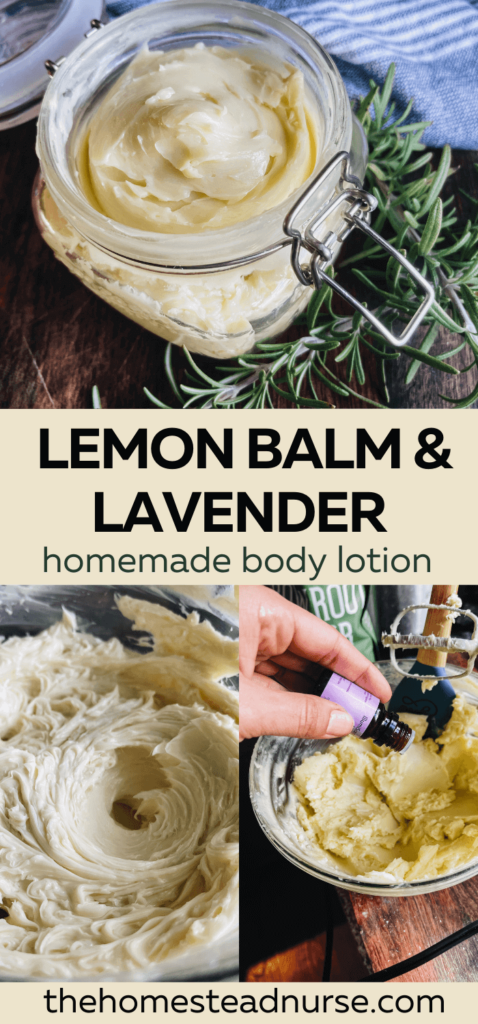
Don’t forget to spread the ❤️ Love & Share this Post!
